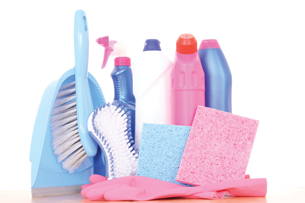Module 5 Intro
1. Module 5 Intro
1.9. Page 7
Module 5—Acids and Bases
 Reflect and Connect
Reflect and Connect
Many of the foul odours from spoiled foods are due to acidic compounds. For example, butyric acid (butanoic acid) is present in rancid butter. Butyric acid can be detected by humans at concentrations as small as 10 ppm.
How does baking soda remove this odour? In the Try This: An Acid-Base Reaction activity at the beginning of this lesson, you mixed baking soda with vinegar. It was very obvious that a chemical reaction was occurring based on the observed foaming and bubbling. When acidic compounds are present in a refrigerator containing an open box of baking soda, the sodium carbonate reacts with the acid and moisture contained within the air inside, neutralizing the odour.
Is baking soda the best choice for removing odours in a refrigerator? Use the Internet or your library to research other substances that have the ability to neutralize odours. Select one of these substances, and write an experimental design that could be performed to compare the effectiveness of this substance with baking soda as a deodorizer. Perform the experiment, and write a paragraph detailing the results.
Include your experimental design, all the data collected, and your results in your course folder and submit them to your teacher for assessment if you are instructed to do so.
 Reflect on the Big Picture
Reflect on the Big Picture
Baking soda and vinegar are two products that have potent cleansing properties. You can use the Internet to find recipes for many cleaners that use non-toxic materials found in your kitchen. Use the combination of search terms cleaners, non-toxic, and marketplace to locate recipes for “green cleaners.”
Select two recipes for cleaning solutions that you wish to investigate; then complete the following tasks:
-
Shoot a video or create a slide show or illustrations of you making the solutions. Indicate what type of cleaner you are making, the ingredients needed, and the steps required to properly mix them together.

© matka wariatka/shutterstock
- Shoot a video or create a slide show or illustrations of you using each cleaner for its intended purpose. Evaluate the effectiveness of your cleaner against commercial products that do the same job.
Save a copy of the record of your work to your course folder. Make sure that your finished work includes evidence of your experimental design, all the data collected, and your results. Submit to your teacher for assessment if you are instructed to do so.